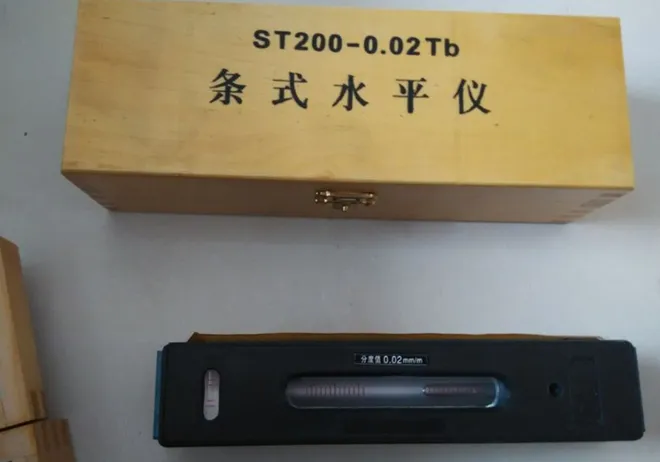Dec . 05, 2024 04:44 Back to list
Exploring Different Types of Snap Gauge for Precision Measurements in Manufacturing
Understanding Snap Gauge Types A Comprehensive Overview
Snap gauges, also known as snap gauges or snap gages, are measuring instruments used extensively in manufacturing and quality control processes. They are designed to provide quick and accurate measurements of the external dimensions of an object, particularly its width and thickness. Snap gauges are pivotal in ensuring that products meet specific tolerances and standards, reducing variability, and enhancing product quality. This article will delve into the various types of snap gauges, their applications, and benefits.
Types of Snap Gauges
1. Fixed Snap Gauges These are the most straightforward type of snap gauges, featuring two measuring faces that remain at a constant distance apart. The fixed snap gauge is primarily used for measuring parts with known dimensions. It provides a binary readout—either the object fits within the gauge or it doesn’t. This type is particularly useful in scenarios where high volume production requires rapid checks of parts to ensure they meet size specifications.
2. Adjustable Snap Gauges Unlike fixed snap gauges, adjustable snap gauges can be calibrated to measure a range of dimensions. They consist of movable measuring jaws that can be set to different widths, accommodating various sizes of parts. This flexibility makes adjustable snap gauges ideal for industries that deal with multiple components of varying sizes, allowing for efficient measuring without the need for multiple tools.
3. Electronic Snap Gauges Advancements in technology have led to the development of electronic snap gauges, which offer enhanced precision and functionality. These gauges are equipped with digital displays, allowing users to read measurements quickly and accurately. Furthermore, they often feature data logging capabilities, making them suitable for integration into automated inspection systems. Electronic snap gauges can significantly reduce measurement time and improve traceability in quality control processes.
4. Go/No-Go Snap Gauges Go/No-Go gauges are specialized snap gauges designed for acceptance or rejection testing. These gauges feature two sections—one marked as ‘Go’ and the other as ‘No-Go’. The ‘Go’ section indicates the maximum acceptable size, while the ‘No-Go’ section specifies the minimum acceptable size. Parts that pass through the ‘Go’ gauge but do not fit into the ‘No-Go’ gauge are deemed acceptable. This type of snap gauge is commonly used in production environments where it is crucial to ensure that parts conform to specified limits without the hassle of numerical measurements.
snap gauge types

5. Profile Gauges These snap gauges are designed with profiles that match specific shapes, allowing for more complex measurements. Profile gauges are essential in industries where the shape rather than just dimensions matters, such as in automotive or aerospace manufacturing. They ensure that components not only fit in terms of size but also in their overall profile, enhancing compatibility and performance.
Benefits of Using Snap Gauges
Snap gauges are invaluable tools in various industries, offering numerous advantages
- Speed and Efficiency Snap gauges enable quick checks of parts, making them essential for high-volume production lines where time efficiency is critical. - Precision They provide reliable measurements, ensuring that parts are manufactured within defined tolerances to maintain quality and safety standards. - Ease of Use With their simple mechanism, snap gauges can be used quickly by personnel with minimal training. - Cost-Effective The use of snap gauges can reduce scrap rates and rework costs by ensuring parts conform to specifications before leaving the production line.
Conclusion
In conclusion, snap gauges play a crucial role in modern manufacturing and quality assurance processes. With various types available to suit different measurement needs, these tools help maintain product quality, efficiency, and compliance with industry standards. As technology continues to advance, the development of more sophisticated snap gauges, such as electronic and automated systems, promises even greater improvements in precision and productivity. Whether in a high-volume assembly line or a quality control lab, understanding the different types of snap gauges and their applications is essential for professionals striving for excellence in their craft.
-
Why Metric Trapezoidal Thread is Ideal for Precision Motion ControlNewsAug.05,2025
-
The Unique Properties of a Block of Granite for Industrial UseNewsAug.05,2025
-
The Role of Flanged Y Strainers in Preventing Pipeline ClogsNewsAug.05,2025
-
The Importance of Regular Calibration for Master Ring GagesNewsAug.05,2025
-
How a Cast Iron Surface Table Enhances Accuracy in ManufacturingNewsAug.05,2025
-
Comparing Different Check Valve Types for Optimal Flow ControlNewsAug.05,2025
Related PRODUCTS









